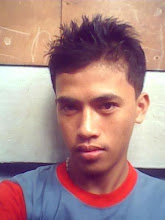Carpentry”
A carpenter (builder) is a skilled craft person who performs carpentry, see also joiner. Carpenters work with wood to construct, install and maintain buildings, furniture, and other objects. The work may involve manual labor and work outdoors.
Plumbing”
Plumbing (from the latin plumbum for lead as pipes were once made from lead) is the skilled trade of working with pipes, tubing and plumbing fixture for drinking water systems and the drainage of waste. A plumber is someone who installs or repairs piping systems, plumbing fixtures and equipment such as water heaters. The plumbing industry is a basic and substantial part of every developed economy due to the need for clean water, and proper collection and transport of wastes.
I PICK IT!! My Best Project”
Solid concrete blocks can be made with the right molds and a little know-how. Hollow concrete blocks, however, require a considerable amount of finesse to come off correctly. The best method of creating hollow concrete blocks at home involves using inflatable balls as the molds. That creates a spherical pattern that can be used as flower pots and gardening affectations, as well as serving more practical duties. Hollow blocks made in other shapes require much more specialized equipment.
Procedure:
Step 1
Inflate a beach ball and use a felt pen to draw a circle around the top, with the air valve in the center. This will be the opening of your concrete block.
Step 2
Apply water-based concrete-releasing agents to the entire surface of the ball.
Step 3
Wrap strips of hardware cloth around the surface of the ball, leaving the area inside the drawn circle clear. Be sure the strips remain as evenly spaced as possible: Multiple layers on top of one another will create an uneven surface, which makes it trickier to get the concrete sphere right.
Step 4
Place a layer of wet concrete around the surface of the ball. The layer should be a uniform 1/2 inch thick around the entire surface. The area inside the drawn circle should be kept completely free of concrete mix.
Step 5
Allow the concrete to harden for at least 24 hours.
Step 6
Deflate the ball and carefully remove it from the concrete.
Step 7
Add additional layers of concrete over the first until the block is of the desired thickness. You may wish to do this in stages, adding a little concrete at a time instead of placing it all on at once.
Why I pick this as my Best Project?
I really admire the personality of our instructor in this major subject. Aside from being a good teacher to us, he be able to deliver his lesson well to us. I enjoyed those moments I have experience during his lecture, like injecting jokes during our sessions and asking challenging questions to us. Luckily, I was exempted to the final exam, but in our project I'm no longer exempted. Making hollow block was really hard, because it requires strength. Those tools, which are needed in hollow block making were very heavy. But, it's not a hindrance in order for us to finished the project.
Documentation's








































